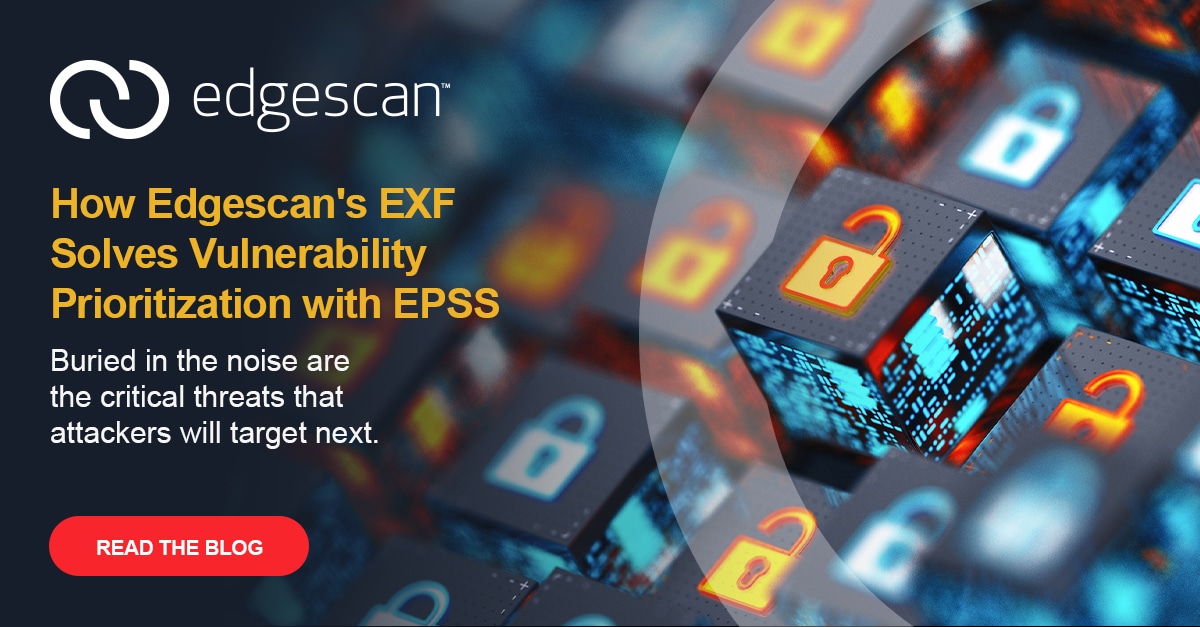The return on investment (ROI) for cybersecurity tools is a notoriously hard one to calculate. It’s a critical way to assess whether an investment is worth its price tag, but calculating how much a cybersecurity solution might save an organisation is a complicated matter.
Some calculate cybersecurity ROI by multiplying the average cost of a security incident by the number of cyberattacks that, statistically, would hit an organisation in any given time frame. Although this can give the board an idea of how much a certain cybersecurity solution might save the business, this remains an approximate calculation, which might not be entirely reflective of the value of an investment in security tools.
At Edgescan strives to give its customers the best value for their investment, and that includes being able to prove that the Edgescan full stack vulnerability platform saves them money and time. To help its customers visualise the ROI, the Edgescan platform provides some useful metrics that assess how many employees’ hours are saved by automating the process of vulnerability management across the fullstack.
But, there are many more returns on investment that don’t necessarily translate into a number. Some of the operational advantages that a cybersecurity solution can bring to an organisation are harder to quantify, but ultimately make a huge difference when it comes to streamlining security and avoid a breach.
- Mean time to remediate (MTTR)
The average time it takes organisations to patch a high risk network vulnerability is around 49 days. This number is consistent across small and large enterprises. The Edgescan platform tracks the MTTR of its clients and compares it to the average. This gives organisations a benchmark to compare their performance against, so that security teams can track how their patching policies have improved.
- Creating a channel of communication between teams
One of the main challenges facing security teams is communicating with IT, DevOps, and the rest of the team. Too often, cybersecurity operations use a language that only makes sense to security analysts, which makes it harder for teams to work together. It’s important for cybersecurity tools to simplify the interactions between teams, to promote collaboration and ensure that cybersecurity objectives are shared by the organisation as a whole.
For this reason, Edgescan has worked to make its platform as intuitive as it can be. Reporting, in particular, has been designed to be automated, seamless, and – most importantly – understandable.
- Time saved
At the end of the year, Edgescan provides its clients with an assessment of how many hours of their employees’ time the platform has saved. By automating the discovery and the assessment of vulnerabilities, security analysts are free to turn their attention to other matters, ultimately saving the business money. Additionally, by manually validating every vulnerability, Edgescan provides alerts that are virtually false positive free, thus avoiding false alarms that would waste personnel time.
- Peace of mind
Cybersecurity vendors can sometimes be hard to get a hold of. Especially with large vendors, the feedback of each individual client is rarely taken into account, and speaking with a human might require going through several steps of automated calls. Edgescan has made it a point to maintain the same hands-on approach with its clients as it had when we first started. We might have gotten bigger, but responding to clients’ queries and listening to what they have to say helps us improve and keep in touch with evolving security needs.
The average cost of a cyberattack easily surpasses the $1m mark, and avoiding falling victim to one is critical. At the same time, when looking for a cybersecurity tool, don’t just focus on the price tag – ask for what other benefits a solution could bring to your business. It’s essential for organisations to start seeing security as an opportunity to add operational value, rather than a necessary spend that is hard to justify.
Maximizing ROI with NVM
At Edgescan, we help you maximize the ROI of your cybersecurity investments. Our Network Vulnerability Management (NVM) service delivers continuous monitoring and prioritization of risks, ensuring your resources are focused on what matters most. From Dublin to New York, we provide tailored solutions to optimize your security strategy.






